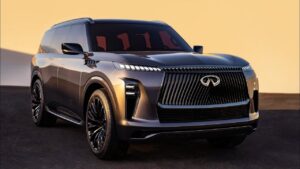Key Takeaways:
– Explore the history and future of eco-friendly vehicles.
– Examine the diversity of eco-friendly vehicles available today.
– Review the technological advances propelling eco-friendly automobiles.
– Analyze the role of policy and consumer behavior in the rise of sustainable transportation.
– Look at the environmental effects of shifting to greener driving options.
Table of Contents:
- Introduction to Eco-Friendly Vehicles
- History and Development of Eco-Friendly Cars
- Types of Eco-Friendly Vehicles
- Advantages of Eco-Friendly Automobiles
- Government Incentives and Policies
- The Role of Technology in Advancing Eco-Friendly Vehicles
- Consumer Reception and Adoption
- The Automotive Industry’s Commitment
- Eco-Friendly Vehicles’ Impact on the Environment
- The Future of Eco-Friendly Driving
Introduction to Eco-Friendly Vehicles
As human civilization confronts the environmental challenges of the 21st century, eco-friendly vehicles stand as a beacon of hope and innovation. These vehicles are thoughtfully designed to limit or remove harmful emissions contributing to climate change. The marketplace now offers a retinue of eco-conscious options, thanks partly to efforts by forward-thinking auto manufacturers such as Kia of Irvine. Their commitment to sustainability has played an undeniable role in accelerating the development and popularity of green cars.
The interest in eco-friendly vehicles is not a mere trend but rather is rooted in a collective realization of the drastic consequences of global warming. Consumers have become more environmentally conscious, and the automotive industry has acknowledged the necessity of changing its long-established practices.
Related: Why Location Matters When Selecting a Car Dealership
History and Development of Eco-Friendly Cars
The journey of eco-friendly vehicles is a fascinating narrative of innovation, abandonment, and resurgence. Contrary to popular belief, electric cars enjoyed dominance in the early 1900s, preferred for their lack of noise, vibration, and the direct pollution associated with gasoline cars. However, the advent of the Ford Model T and the ease of gasoline production eventually relegated electric vehicles and other eco-friendly alternatives to the fringes of the automotive industry.
This trend persisted through much of the 20th century until the oil crises of the 1970s prompted a restarted interest in alternative energy sources for vehicles. From that point on, eco-friendly vehicles started a slow but steady ascent back into public awareness, fueled by advancements in battery technologies and heightened environmental concerns.
Modern history records a renewed commitment to reducing fossil fuel dependence and mitigating pollution. Today, eco-friendly vehicles are increasingly joining mainstream auto lineups and are more efficient, advanced, and desirable than ever before.
Types of Eco-Friendly Vehicles
Hybrids: Combining Power and Sustainability-
Hybrid vehicles provide a practical transition for those wanting to move away from full dependence on fossil fuels without committing to a fully electric apparatus. These cars use an electric motor to assist a conventional engine, thus decreasing gasoline use and, correspondingly, the emissions associated with its combustion. They represent a versatile solution blending familiarity with innovation and act as an intermediary phase for the market and consumers navigating towards a more sustainable future.
All-Electric Vehicles: The Zero-Emission Future-
All-electric vehicles (EVs) are the bedrock of the push towards a zero-emission future. Unlike hybrids, EVs eschew gasoline completely, relying on electric batteries for all their power needs. They promise a driving experience free from any direct contribution to air pollution and have become symbols of a cleaner, more responsible approach to personal transportation. Each year, these vehicles are becoming more accessible and practical thanks to a growing network of charging stations and technological improvements.
Hydrogen Fuel Cell Cars: Pioneering Energy Transformation-
Representing one of the cutting-edge innovations in the automotive sector, hydrogen fuel cell vehicles showcase an alternative future for eco-friendly transportation. These vehicles power electric motors by converting hydrogen gas into electricity while emitting only water vapor as a by-product. Although the infrastructure for hydrogen fueling is still in its infancy, these vehicles are poised to play a significant role in a sustainable automotive future.
Related: Introducing the New 2024 Toyota Camry NASCAR Cup Car!
Advantages of Eco-Friendly Automobiles

The roster of advantages of eco-friendly vehicles extends well beyond the ecological benefits. They often boast lower operational costs due to savings on fuel and reduced maintenance, with electric motors being inherently less complicated and more durable than combustion engines. Furthermore, incentives such as rebates, tax credits, and special highway lane privileges have been established in many regions, sweetening the proposition of owning an eco-friendly vehicle economically and practically.
Such benefits align well with consumer values and financial interests, fostering a positive disposition towards more sustainable driving options. Consequently, as more consumers reap these benefits, a collective momentum is built, accelerating society’s transition to a more environmentally considerate transportation paradigm.
Government Incentives and Policies
Across the globe, governments have actively shaped the automotive market through various incentives that encourage citizens to choose eco-friendly vehicles. From offering rebates and tax credits to constructing charging stations, they are laying the foundation for a broader adoption of environment-friendly cars. Public policy initiatives to reduce carbon footprints have resulted in substantial infrastructure upgrades, making alternative fuel vehicles more feasible and desirable.
The Role of Technology in Advancing Eco-Friendly Vehicles
Technological advances are at the heart of the evolution of eco-friendly vehicles. For instance, the progress in battery technology has been revolutionary, offering greater energy storage capacity, faster charging times, and longer operating ranges for electric vehicles.
These improvements continue to close the performance gap between traditional and green cars, making the latter increasingly competitive. Simultaneously, advancements are being made in biofuels, hydrogen energy, and other alternative energy sources.
Improved fuel efficiency in combustion engines also contributes to this broader movement. As technology marches forward, so do the prospects for a cleaner, more sustainable transport sector, emphasizing the need for continued innovation and investment in this crucial area of environmental stewardship.
Consumer Reception and Adoption
Consumer behavior is critical to the market’s readiness to embrace eco-friendly vehicles. As awareness around environmental issues increases, so does the demand for cars with smaller carbon footprints. Market trends reveal a shift in consumer preferences towards greener options despite challenges such as initial price premiums and concerns over vehicle range.
However, these hurdles are becoming less daunting, with battery performance on the uptrend and a growing infrastructure to support electric vehicles more manageable. Moreover, eco-friendly vehicles are beginning to shed their niche status and enter the mainstream narrative—the testimony to their growing acceptance. Each year, more consumers are choosing to switch to greener vehicles, setting a precedent for a sustainable vehicular ecosystem.
Related: How Dealers Determine the True Value of Your Car
The Automotive Industry’s Commitment
The automotive industry is still catching up as the world pivots towards a greener future. Leading car manufacturers are diversifying their fleets with eco-friendly models, acknowledging the market shift towards sustainable choices. Many of these companies set ambitious goals to phase out combustion engines altogether. They recognize that environmental responsibility and innovation are necessary for long-term growth and profitability.
Eco-Friendly Vehicles’ Impact on the Environment
Adopting eco-friendly vehicles has profound implications for the planet’s health. By significantly reducing dependency on fossil fuels and greenhouse gas emissions, these vehicles offer a tangible solution to some of our age’s most pressing environmental issues. The transition to low-emission cars can contribute immensely to combating air pollution and climate change, resulting in more sustainable cities and healthier living conditions for future generations.
The Future of Eco-Friendly Driving
The future of transportation looks promisingly green as eco-friendly vehicles take on a more prominent role in our lives. Innovations abound, offering glimpses into a future where transport is not only environmentally benign but also highly efficient and integrated with smart technology. The culmination of consumer interests, industrial shifts, and policy frameworks will shape the trajectory of eco-friendly driving, hopefully steering us towards a cleaner, more sustainable tomorrow.








